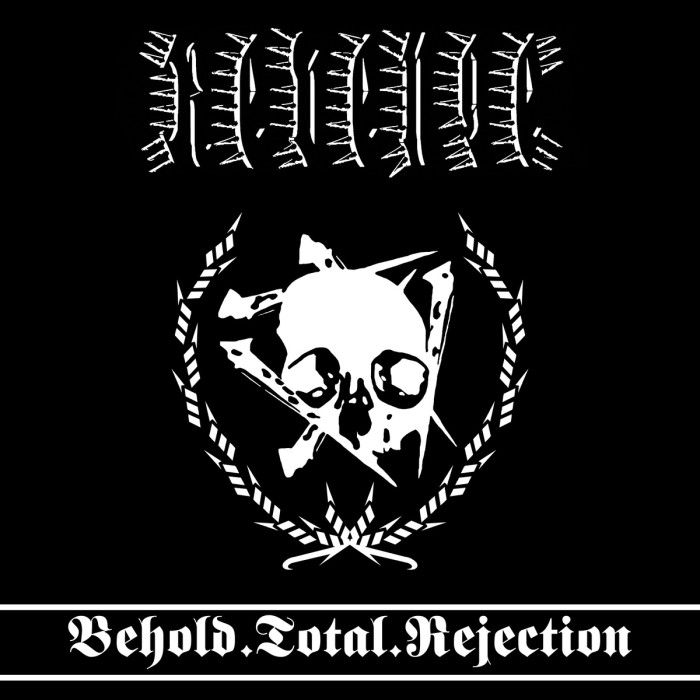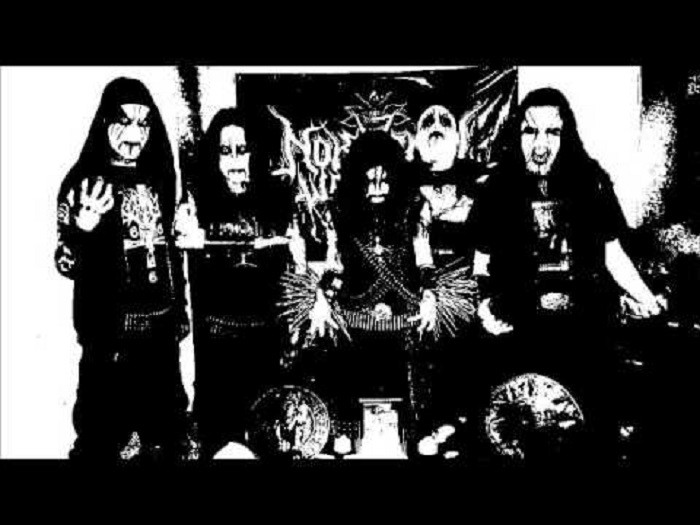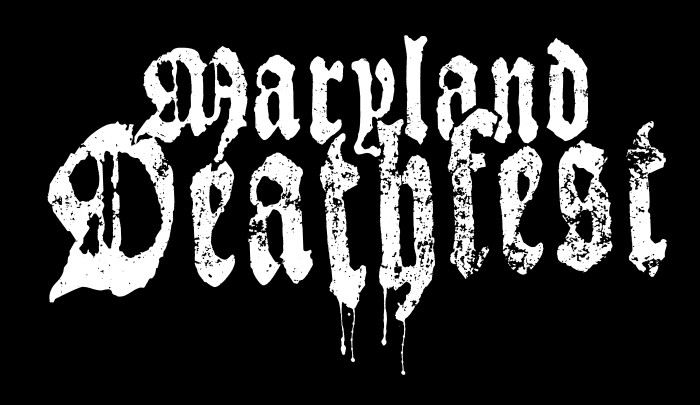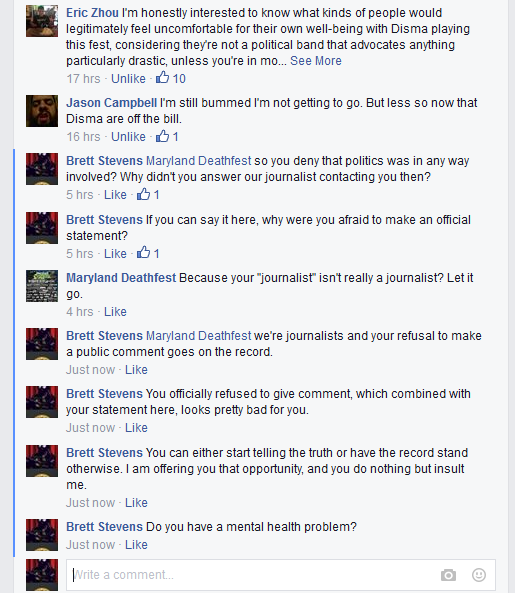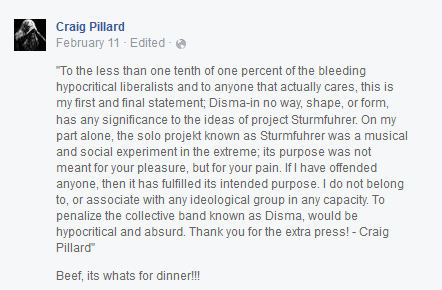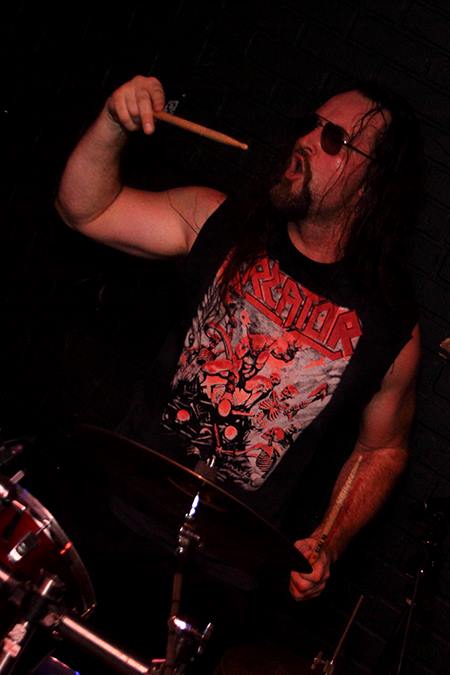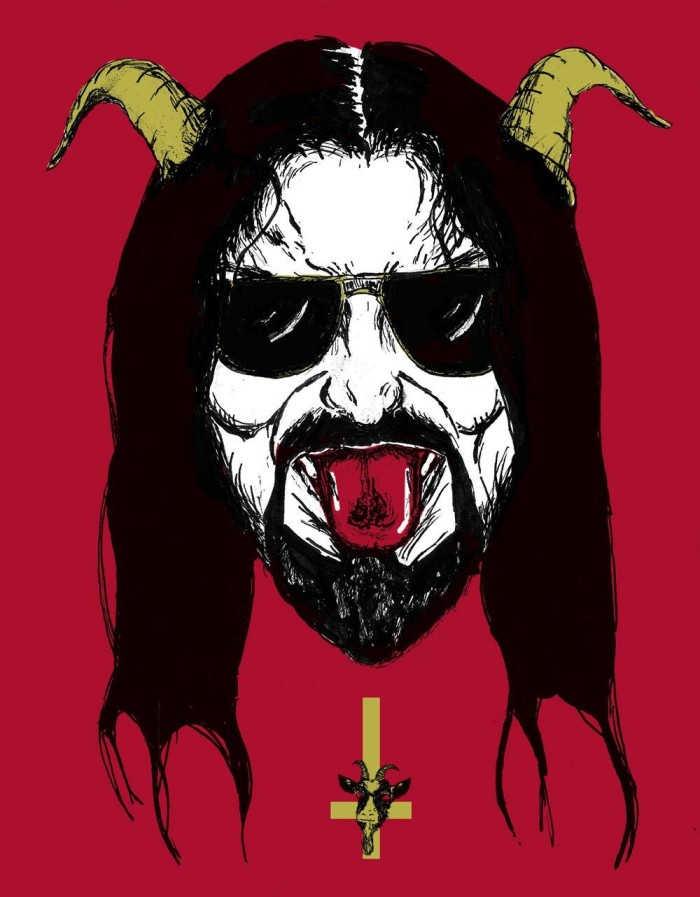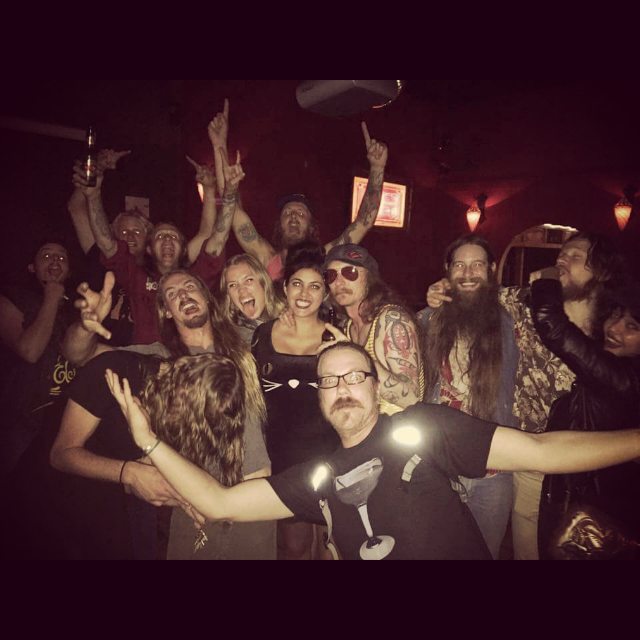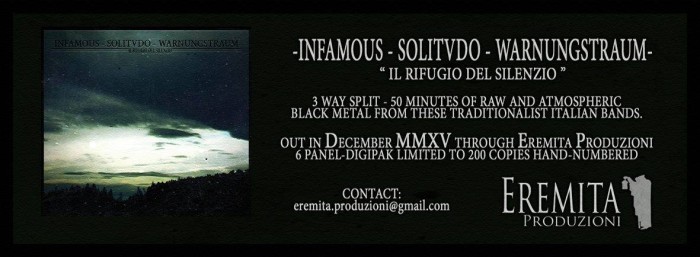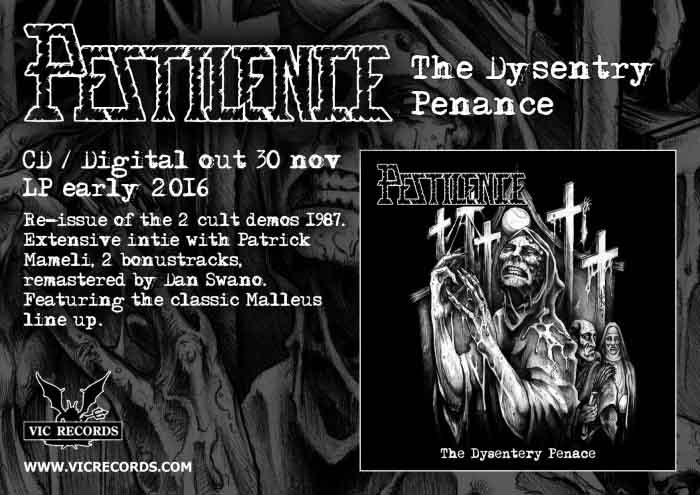War metal band Revenge have posted a peek into their upcoming Behold.Total.Rejection, which will be released November 13, 2015 on Season of Mist Records. The new track “Wolf Slave Protocol (Choose Your Side)” shows this band going further into its Blasphemy-inspired noise-fueled attack that uses almost linear evolution of a central theme to create a texture of grindcore-style riffs.
Like most of metal, this band navigates between the extremes of fru-fru technical rock which is essentially warmed over 1970s music, and the droning three-chord “authenticity” that finally ushered punk into entropy. Metal fans should ask whether they will be able to listen to this song repeatedly over the years and still get a sense of energy and purpose from it. Many of the best metal bands use some melody and more structure to spice up the otherwise raw aural attack in order to avoid lapsing into intense similarity between tracks and albums.
The band also released a tracklist for Behold.Total.Rejection:
- Scum Defection (Outsider Neutralized)
- Shock Attrition (Control In Decline)
- Wolf Slave Protocol (Choose Your Side)
- Mass Death Mass
- Mobilization Rites
- Silent Enemy
- Desolation Insignia
- Hate Nomad
- ETHR (Failure Erased)
- Nihilist Militant (Total Rejection)
Season of Mist released the following statement:
5 CommentsFounded in 2000 by J. Read (BLOOD REVOLT, ex-CONQUEROR), REVENGE has since delivered some of the most severe and violent music the metal underground has ever produced. Using militant imagery, and behind the force of savage live shows, the band has built a die-hard following amongst the extreme factions of the black and death metal scenes. Simply put: they are one of the most extreme bands in existence. ‘Behold.Total.Rejection’ is arguably the most fervent release and a manifesto of rejection – rejection of the groundswell of mediocrity within the scene, rejection of compromise as a means of embracing of a wider audience, rejection of the dogma and strictures of religion and the trappings of the feeble social slave. ‘Behold.Total.Rejection’ is a torrential barrage of relentless animosity. No scene. No brotherhood. No remorse.
